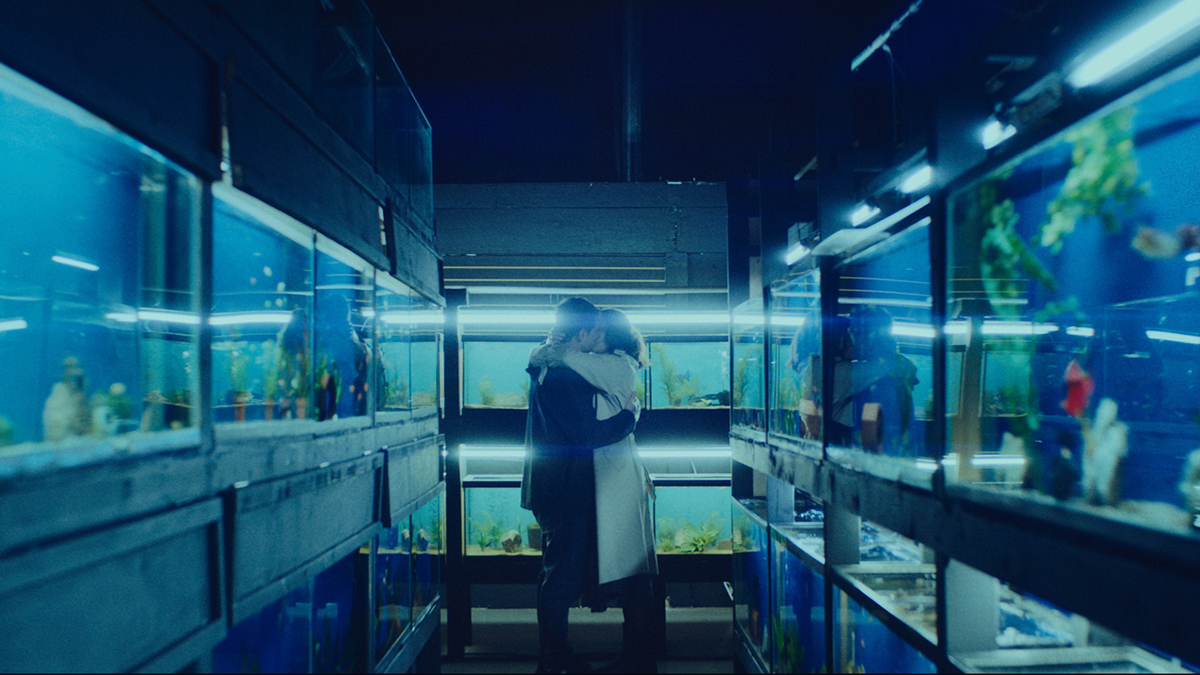Of all the changes COVID has brought to the arts world, one of the most significant has been to big-screen entertainment. Charlottesville theaters and moviemakers have done their best to adapt, whether it’s drive-in film festivals or rent-a-theater evenings, but the pandemic has undeniably sped up the trend of people consuming entertainment alone and on decidedly smaller screens.
Jeff Dobrow, a visual and technology artist based in Charlottesville, has given a lot of thought to this. “We are so used to consuming amazing experiences in small ways,” he says. “Our laptop screen is 17 inches. That’s our new world.”
He argues that it doesn’t have to be that way. Brighter Together, Dobrow’s ongoing series of visual shows through UVA Arts, is his solution to the small-screen problem. Since late March, Dobrow has been using projection mapping technology to display a variety of images on various buildings on Grounds, starting with the chapel and concluding on May 14 and 15 with Madison Hall. The intended result is to inspire both awe and hope—awe at the dazzling, enormous images transforming iconic architecture, and hope about the ability to safely draw crowds of art lovers together in the same space.
Creating such larger-than-life projections may seem like a daunting task, but it’s business as usual for Dobrow, who’s been working in technology since he was a teen. (“It’s been my entire life, since I started programming computers for RadioShack in 1983.”) Much of his early career was devoted to the commercial side of the field, but he says that one day he woke up, “did a 180,” and immersed himself in the arts instead.
Dobrow had been living and working in Charlottesville for several years when UVA Arts reached out to him about the Brighter Together project. “I’ve known Jody [Kielbasa] for probably five or six years,” he says. Back in 2017, he and Kielbasa, UVA’s vice provost for the arts, had “chatted about the bicentennial”—an event that heavily utilized projection mapping on the Rotunda, displaying a visual history of the building—“but that was not my kind of show.” When Dobrow gave up commercial art, he also shifted away from chronological storytelling in his visuals, opting for more loosely conceptual work. His style didn’t mesh with the bicentennial’s, but it proved to be perfect for Brighter Together.
True to form, Dobrow consciously chooses not to tell a story with his work on these buildings—either of the university at large or of the pandemic year. “I didn’t want to create a piece that contemplated…the horrible reality [of 2020],” he says. “We’ve had enough of that. Let’s dance, let’s have some fun.”
Fun doesn’t begin to describe the sublime projections. Some of the images are recognizable and taken from the animal kingdom, like a tiger prowling across the surface of the chapel or a butterfly visiting flowers on the Rotunda—a decidedly more peaceful image than the bicentennial’s flaming Rotunda, itself a callback to the disastrous real-life fire of 1895. Other Dobrow images, rippling and morphing shapes and patterns, are less rooted in reality. Everything is connected by different selections of EDM music that can be heard at each of the Brighter Together events.
Dobrow identifies these soundtracks, and how they interact with the visuals, as the most important relationship in his artwork, aside from the relationship between the art and the building onto which it’s projected. For Brighter Together, he enlisted the help of Red Flower Lake, a local husband-and-wife group. The duo’s otherworldly tunes pair nicely with Dobrow’s trippy visuals, creating a product that might be commonplace at a music festival, but is considerably more remarkable when projected onto UVA’s historic buildings.
Projection mapping is still a new art form, particularly in the U.S. “It’s huge in the rest of the world and has been for years,” says Dobrow. “Like most things in the United States, our first exposure to it was…through revenue-generating advertising.” He’s advocating for it to become a more accepted medium, both for patrons of the arts and for aspiring creators. “A huge part of what I do is education, especially for at-risk kids. No one has heard of [projection mapping], but a lot of it is accessible.”
Not only is the concept relatively recent, Dobrow says it’s also constantly in flux thanks to continual technological improvements—or, in his words, “basically everything that’s going to turn us into Terminator 2.” It’s already incredible, he stresses—the GPU technology he’s used for Brighter Together enables the images to interact with the music in real time—and it’s becoming more advanced by the day. He contrasts the canvas and brush process of traditional painting with the more complex world of projection mapping. “With technology, we are experiencing things we didn’t think we could do.”
What Dobrow wants to emphasize most—and what’s hardest to convey in a newspaper article—is the sheer magnitude of his projects. He says the creation of his projections often gives him small-screen fatigue, hunched over “my little laptop for endless periods of time…but when I go and put it back on the building, it’s huge. It’s everything. The transformation hits me every time.”
Brighter Together is a partnership between The Division of Student Affairs, UVA Arts, and the office of the Provost and Vice Provost for the Arts with generous support from the AV Company.










